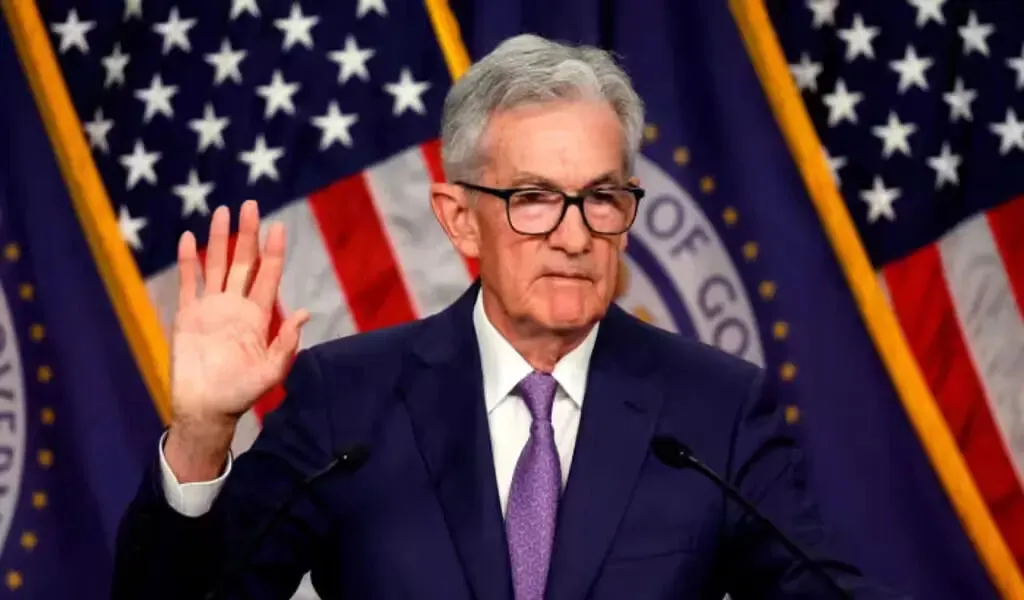News
Market Speculation Over the Next Fed Rate Reduction Hides More Fundamental Issues.

(VOR News) – This is the best of times for someone setting US rates from a chair.
The Federal Reserve is now open to criticism from all directions since the meeting on September monetary policy concluded on Wednesday.
Given its painstaking preparation for its first cut since the epidemic, there is little question at all that it will decrease prices. Trading floors, newsroom nerds, and investment offices are rife with arguments about whether it will be cut by a half percentage point or the typical quarter-point haircut.
Head of macro and strategic asset allocation at investing company Fidelity Salman Ahmed says “the obsession has been like it’s the end of the world.”
“It looks like the market is putting pressure on the Fed.”
Arguing for a quarter-point cut from the present 5.25 percent to the 5.5% target range is really simple. Given inflation has returned to the Fed’s target and the employment market is slowing but not collapsing, it is now time to slightly ease the brakes using the standard step.
As Team “Go Large” notes, Fed Chairman Jay Powell’s comments on the “pace” of easing at the Jackson Hole conference back in the summer inadvertently set the ground for a debate on the degree of rate cuts.
More recently, quite serious people have argued for a half-point cut, including former New York Fed president Bill Dudley.
Noticing this, rate speculators suddenly shifted their predictions from a certain little cut to a respectable possibility of a significant one.
Here the Fed runs in the danger of coming across as scared. Going big on paper suggests that rate setters believe they have to fast turn around their course because they believe they have made a mistake in maintaining interest rates at their highest level in decades for too long and that it is too late to avert a recession from commencing.
Still, markets have embraced the concept of such a sizable decrease this time around. If it doesn’t horrify the markets, why not start with a bang?
The general view seems to be that they are trying to squeeze the Federal Reserve. A double chop, especially as the first action in an easing cycle, usually implies that investors believe a recession is approaching since the markets for interest rates point to more notable declines in the next year.
Studies show, meanwhile, that investors do not truly believe that. More politely, they are bluffing on this point; else, they are hedging for worst-case conditions.
Based on Bank of America’s weekly fund manager poll this week, just 11% of investors believe the US economy is likely to land gently. Still, 79% of respondents expect a more subdued slowdown. Once more the rates markets are showing their extroversion.
The greatest immediate source of difficulty for the markets will thus be Powell’s communication skills, which will be tested during the back-and-forth of the press conference following the meeting.
Would it be a fearful half-point cut to prevent catastrophe or a joyful half-point cut announcing success against inflation? Would a quarter suggest that the central bank is still terrified of inflation and is still too rigid to take chances?
The Fed’s army of relentless internet enemies is showing off their strength.
Strong possibility of volatile market fluctuations exists here. A paper published this week by the Bank of International Settlements, the think tank for big central banks, highlights “hypersensitive” market conditions brought up by this summer’s run-to-the-hills.
All of this thrill, though, hides a more important and broader statement about a change in the global asset hierarchy. Usually, the Fed shapes the global monetary policy scene. Still, the US economy is slowing down to more closely match those of other countries rather than imploding.
“Fading US exceptionalism is an important theme,” says Sam Lynton-Brown, global head of macro strategy at French bank BNP Paribas. That suggests that US GDP is larger than that of its peers, US bond yields are more than those of its peers, and US assets outperform peers is most likely going to decrease.
Though a nice diversion from other, far more significant issues and from the debate of where rates should decrease, it is nevertheless a diversion. “Once you get past the Fed, it’s going to be election risk, recession risk, or, at least we forget, inflation could come back,” Ahmed of Fidelity says.
The stakes will then be so great that today’s frantic supposition about the narcissism of small distinctions will seem meagre.
SOURCE: FT
SEE ALSO:
Uber will Introduce Trip Recording Tools and a “Verified” Rider Badge in the United States.
Amazon Mandates that Employees Report to the Office on Five Consecutive Days.





























